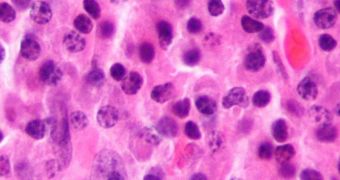Oncologists have been trying to determine why an aggressive form of multiple myeloma is able to resist the action of chemotherapy drugs for quite some time, thus far to no avail. Recently, scientists at the Washington University in St. Louis (WUSL) School of Medicine have made an important breakthrough.
During the research, the WUSM group showed precisely how multiple myeloma evades the devastating effects of chemotherapy drugs. This type of cancer affects the plasma cells located in the bone marrow, and is extremely rare.
At this point, the conclusions of the new study are useless, in the sense that no cure can immediately be derived from them. However, these results do provide access to a new avenue of research into the nature of this cancer, which could eventually lead to novel therapies and chemicals.
In a paper published in the July 2 online issue of the Journal of Clinical Investigation, the team explains that around 1 in 5 multiple myeloma patients displays a genetic abnormality (or translocation) that is associated with a poor prognosis.
The abnormality refers to a broken section of chromosome 14 being swapped into chromosome 4. This change enables the cancer to withstand the action of even the harshest chemotherapy drugs available today. In addition, it also tends to shorten patients' survival time.
“Even in this cancer that has no cure, patients with the 4, 14 translocation tend to do very poorly with treatment,” explains WUSM associate professor of medicine, Michael H. Tomasson, MD.
“But no one really knew why. For a number of years, we have been studying the gene at the chromosome’s breakpoint, without much success in explaining how it could lead to cancer,” he adds.
The gene affected by the abnormality is called WHSC1, and it plays an important role in manufacturing proteins that guide the DNA packaging process. This is responsible for regulating what genes are turned on or off in any given cell.
“It turns out, hidden inside this gene is a non-coding RNA [called ACA11] that’s expressed at very high levels in patients with the translocation. ACA11 appears to protect the cancer cells from damaging stress,” Tomasson goes on to say.
“It allows the cells to grow better and be resistant to chemotherapy. And if you look at multiple myeloma patients with the 4, 14 translocation, they tend to show resistance to treatment as well. Not to every chemotherapy, but they show resistance to a number of them,” he concludes.

 14 DAY TRIAL //
14 DAY TRIAL //